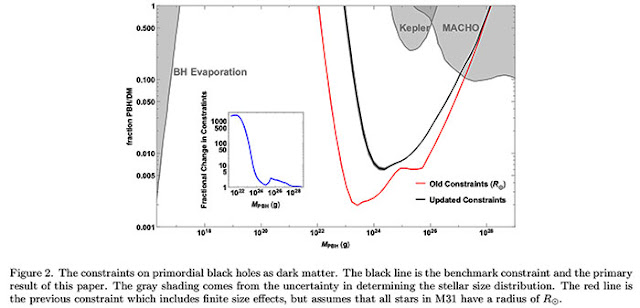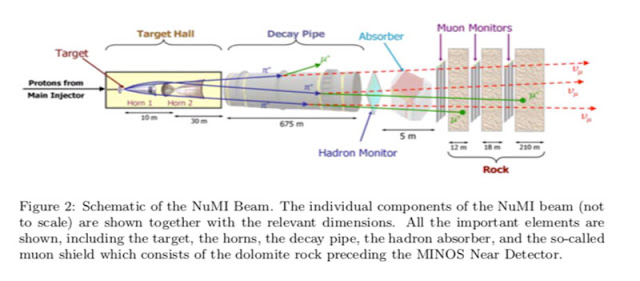Last week we talked about the search for ghostly particles from nuclear power plants and this week we continue exploring some illusive deeply hidden things.
Even as we continue reading Sean Carroll's "Something Deeply Hidden" this idea of things hidden below the surface is again being investigated this week. First up we met up with just two other daring adventurers, Science Nerd and Theatre Impresarios, Scott and Sandy for a night out at Maverick Theater's "Night of the Living Dead." All of the stage action is close up in this small 100 seat theatre. Now if you are like me, you saw this production on TV, but now you can experience the thrill of it all live on stage. The story, written in 1968, begins with zombies and ghouls returned from the dead to terrorize everyone and in this particular case those humans that holed up in a small Pennsylvania house. Later one we are let in on a possible cause of the contagion was a sample return mission from Venus (Hmm, the writers were way ahead of their time), had to be blown up in the Earth's atmosphere after its arrival back home. Yep, it normally starts with some scientist doing something wrong!
 |
| Night of the Living Dead playbill (Source: Maverick Theatre, Fullerton, CA) |
When the zombies break in, the living have to work together to board up the windows in an attempt to stay alive and keep their fleshy brains in their heads and out of the zombies mouths. Even Resident Astronomer Peggy was caught unawares on her way back to the restrooms.
 |
| Resident Astronomer Peggy gets zombie greeting at Maverick Theatre (Source: Palmia Observatory) |
We first saw the live version maybe 10 years ago and experiencing it again just feet away from the live action on stage was very good and fun, even if campy. So, all of you astronomers out there, keep the observatory doors tightly locked and your brains in your own heads and take in the show if you dare!
Meanwhile, after surviving with our brains intact and wondering what type of research into things that are deeply hidden that we could carry out. Well, just by chance we received an email describing a river cruise that started in Transylvania and ended up in Kiev, Russia. So, in Transylvania we could explore vampires who by folklore have to remain deeply hidden during the daytime, so we would be safe and not have to be out late at night. So, this sounds like a great opportunity to see some new parts of the world. We expect to hear a lot about vampires, but probably won't see any, but we can swap stories at regularly convened get togethers in the ships bar! The rest of the cruise up the Dnieper River also sound interesting. In my previous work environment, I worked with several engineers from Belarus and Ukraine. So, check it out and join us on this adventure in late May 2020.
 |
| Adventuring from Transylvania to Kiev, Ukraine (Source: Viking Cruises) |
Ok, ok, let's get back to some of the really unknown stuff about our actual universe. First up here is a paper, sent in by Gravity Guy & Part-time LasVegan, Ken, who found this latest set of findings about the still possible areas where primordial black holes (PBH) can still be hidden and yet responsible for all gravitational affects currently attributed to dark matter. Hmm, the more I hear about this the more I like it, especially given how the search for dark matter or supersymmetric particles still does not find any evidence. Primorial black holes do not require any new physics and they could have been produced in the early universe at overly dense regions and the evidence still points to regions of the mass spectrum where they could remain hidden from observation and yet account for dark matter effects. We can see here that asteroid size primordial black holes, in the 10 to the 18th to 10 to the 22nd grams, could still be missed by current observations and could explain 100% of supposed dark matter effects. Time will tell! Thanks for that latest paper, Ken!
 |
| Right sized primordial black holes still an open possibility for dark matter (Source: Smyth, et al, arXiv:1910.01285) |
Another topic in the mostly hidden category is how the hunt for the nature of the elusive neutrinos gets to the very fundamental nature of physics. Last post we discussed how monitoring neutrinos from nuclear power plants is used to gain further understanding of how neutrinos can oscillate between the three known type so neutrinos. The might be generated as electron neutrinos in the sun or nuclear reactors but they can oscillate and change into and between the two other families of neutrinos. The same thing is observed with muon neutrinos, created in high energy particle accelerators or cosmic ray interactions, which also can oscillate and change into one of the other families. One ongoing mystery is the relative weight of each neutrino type and the hierarchy of all three types. Remember currently it is only possible to measure the neutrino mass squared and not the individual neutrino masses. We understand that the latest sets of experiments indicate that the normal hierarchy is probably the way nature is.
 |
| Now, the normal hierarchy seems to be the way nature is (Source: Fermi national accelerator laboratory) |
As we saw in the last post where making measurements of neutrino flux near the reactors and of neutrino flux farther away from the reactors, it is possible to begin to close in on the details of neutrino oscillation. The longer the distance the easier it is to measure the oscillation, but the longer the distance also means the beam has diverged more and the signal flux is also then weaker.
The NOvA experiment is 810 km away from Fermilab at the northern tip of Minnesota in Ash River. Measurements at that far end are compared to the neutrino types at the near end in Fermilab.
 |
| NOvA detector is 810 km from Fermilab (Source: www.fnal.gov) |
Another long baseline experiment, Deep Underground Neutrino Experiment (DUNE) is coming on line now and collecting data. You can see here that the neutrino beam jus goes straight through the Earth, goes through the detector, and then keeps on going out into space. The Earth hardly impacts the neutrino flux at all, but the distance is long enough that neutrino oscillation can be easier to measure. Hmm, given the different angles to DUNE and NOvA, I wonder if both experiments can be run at the same time? Hmm, I also wonder what the environmental impact study was like when the team had to explain that they were just going to send nuclear decay products under 800 miles (1300 km) of farmland through the Earth?
 |
| Dune detector in Stanford, 800 miles from Fermilab, measures neutrino beam (Source: www.ucl.ac.uk) |
Ok, you might be wondering how the neutrino beams are generated at Fermilab. In the last post we saw that nuclear reactors can produce a steady source of neutrinos, but at Fermilab a large particle accelerator complex is used to generate neutrinos. Fermilab uses a high energy particle accelerator to produce neutrinos.
 |
| Fermilab produces neutrinos by bombarding carbon target with protons (Source: P. Adamson, et al, arXiv: 1507.06690v2( |
The Fermilab Accelerator Complex accelerates high speed protons, which collide with a carbon target, which results in production of pi mesons. The pi mesons then decay into a combination of muon neutrinos and to a lesser extent, electron neutrinos. At the same time, the bombardment results in essentially the same number of antineutrinos as neutrinos. Then by proper selection of either the positive pi meson or the negative pi meson, the source can produce normal neutrinos or antimatter neutrinos. As you can see in the diagram below, most of the neutrinos produced are muon neutrinos, but a smaller amount of electron neutrinos are also produced.
 |
| Charged pions, produced by bombarding carbon with high energy protons, decay to make neutrinos (Source: Wikipedia) |
More of the details of the neutrino beam generation are shown below. It turns out that the beam width at the exit of the source is about 6 feet in diameter and grows to several miles in diameter by the time it reaches the NOvA detector, about 3 milliseconds later (www.novaexperiment.fnal.gov).
Until next time,
Resident Astronomer George
Be sure to check out over 300 other blog posts on similar topics
If you are interested in things astronomical or in astrophysics and cosmology
Check out this blog at www.palmiaobservatory.com


No comments:
Post a Comment